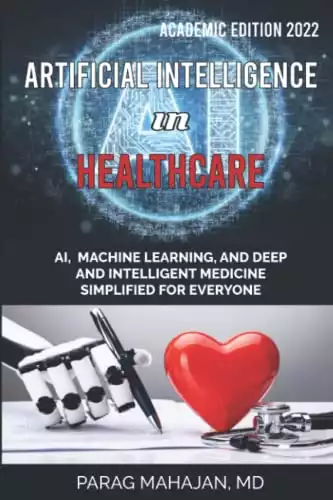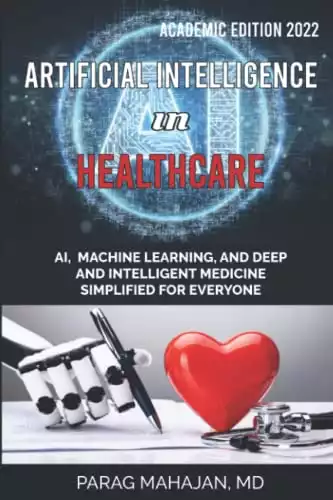Introduction:
3D imaging has profoundly impacted the medical field, providing doctors with invaluable information about the human body. 3D imaging is a type of ultrasound image that provides a three-dimensional view of the body. This technology has the potential to improve medical imaging, help diagnose, and research a variety of diseases.
Table of contents
3D Imaging
3D images can provide a complete anatomical view of the patient, which can help doctors diagnose in an efficient manner. This technology has helped in diagnoses of various diseases and research, including cancer, heart disease, and strokes. 3D imaging has helped doctors provide targeted treatment in a precise manner and improve patient care by visual means which is very powerful. 3D imaging is also being used to teach young doctors and it helps in research of various conditions as well.
In addition, 3D imaging has also been used to develop new treatment options for these conditions. 3D imaging has helped us take scans and 3D print critical parts that match the patient profile that give doctors significant insight on the area of care the patient needs. This article will discuss how 3D imaging can improve medical imaging and diagnoses for various diseases.
What is 3D Medical Imaging?
Diagnostic imaging is a critical tool in modern medicine. It allows doctors to see inside the human body without making a single incision. 3D medical imaging is a type of diagnostic imaging that creates three-dimensional images of tissues and organs.
This image processing technology is often used with other diagnostic tools, such as X-ray imaging and a CT scanner. 3D medical imaging provides a more detailed view of the body, which can help medical professionals make more accurate diagnoses and better understand diseases.
3D medical imaging systems can even create customized treatments for individual patients. This technology is revolutionizing medicine and shows no signs of slowing down.
How Can 3D Imaging Improve Medical Imaging and Diagnoses?
By providing doctors with a complete picture of the patient’s anatomy using anatomical images, 3D imaging can reduce scan times and help improve diagnoses and treatment planning. 3D imaging can assess blood flow and even create custom implants and prosthetics.
One of the key advantages of 3D imaging is its potential for collaboration with cloud solutions. Multiple medical professionals can view the same data from different vantage points, providing a more comprehensive understanding of the problem.
3D images are shared and stored in the cloud, allowing for easier collaboration between doctors and other medical professionals.
3D imaging, in collaboration with cloud solutions and 3D printing, allows multiple medical professionals to see the patient’s anatomy accurately. It is one of the reasons 3D imaging is revolutionizing the field of medicine and improving patients’ lives worldwide.
Early Detection
Medical imaging technology has come a long way in recent years, and 3D imaging can be used for a wide range of purposes, including early detection of medical conditions. A 3D ultrasound image can provide a more detailed body view than traditional 2D imaging.
This can help healthcare professionals to identify potential problems sooner and make appropriate treatment decisions. In addition, 3D images can be rotated and viewed from different angles, giving doctors a better idea of the location and extent of a problem.
In the world of imaging & radiology, this can play an essential role in the early detection and diagnosis of medical conditions.
A Tailored Approach to Patient Care
Advanced imaging technology is increasingly being used in clinical settings to create a tailored approach for the continuum of care for patients. These advanced software solutions allow for more accurate diagnoses and treatment decisions by providing a complete picture of the patient’s condition.
3D imaging can create custom prosthetics and implants specific to patients’ body structures. This results in a better fit, a more comfortable patient experience, and improved patient satisfaction.
In addition, it can be used to plan surgeries, which helps to ensure that the procedure is performed safely and with minimal invasiveness. Ultimately, it provides a more comprehensive and individualized approach to patient care that can significantly improve the patient experience.
Improved Health Outcomes
Cinematic rendering allows medical professionals to create realistic 3D images of patients. This can provide patients with improved health outcomes because it can be used to create a more accurate picture of the patient’s anatomy.
This technology can generate visualizations of organs, bones, and tissues, providing invaluable insights into the human body. These cross-sectional images help surgeons to plan treatment decisions and execute procedures more effectively.
Cinematic rendering can be used to create patient-specific models that can be used for pre-operative planning and simulation. These models help surgeons understand the patient’s anatomy and prepare for potential complications.
3D imaging can also create virtual reality simulations that allow patients to experience procedures before they are performed. These AI-based solutions can help to alleviate patient anxiety and improve patient satisfaction.
Because of this, it’s a versatile tool that can provide patients with improved health outcomes and a more detailed and comprehensive medical record.
3D Imaging and Beyond
3D imaging can help show things that would be difficult to see with two-dimensional imaging modalities such as X-rays. It provides a complete picture of the treatment area using high-resolution images. This allows for more accurate diagnoses and targeted treatment plans for specific conditions.
It can be used to image any part of the body, including the brain, heart, and lungs. In magnetic resonance imaging (MRI), this process is used to create images of the body’s internal organs and structures, which is particularly useful in diagnosing cancers, such as breast cancer screening and other conditions like heart disease.
3D imaging is also helpful in planning surgeries and monitoring healing progress after surgery. It is an essential tool in the medical community that helps doctors provide better care for their patients.
Radiation Dose Optimization
There is no question that a medical imaging device plays a vital role in diagnosing and treating many medical conditions. But traditional imaging centers & techniques can involve high doses of radiation, which can pose risks to patients, especially if they require multiple imaging exams.
3D imaging can help optimize radiation dose by providing more accurate 3D models while using lower doses of radiation. This is particularly important in cases where multiple imaging exams are needed, such as for cancer patients undergoing radiation therapy and requiring a continuum of care.
3D imaging can also guide biopsies and other procedures, ensuring that the correct area is targeted while minimizing exposure to healthy tissue.
Also Read: Best Examples of AI in Everyday Life
Enhanced Image Quality
3D imaging provides improved image quality that can be extremely helpful in the medical field. High-resolution images allow a more detailed view of the human body, which can be invaluable for diagnosing conditions and planning surgeries.
In addition, 3D imaging can help doctors better understand the complex anatomy of the human body and how various organs and systems interact. As a result, 3D imaging plays an increasingly important role in providing high-quality real-time medical care.
Imaging Informatics
Imaging informatics is a relatively new field quickly gaining importance in medical centers & hospitals. It refers to using computers and software to manage and process medical images. This can include everything from soft tissue reconstruction to 3D imaging.
In recent years, there has been a push to use the advanced technology of imaging informatics in conjunction with 3D imaging to create more accurate and detailed images of soft tissues.
While 3D imaging is helpful for various purposes, including diagnostics and surgical planning, soft tissues are difficult to image using traditional methods. Imaging informatics provides a way to create more detailed and accurate images of soft tissues, which can be used for various purposes.
As imaging technology continues to evolve, imaging informatics will likely play an increasingly important role in the medical field.
Imaging informatics and 3D imaging are often used to create accurate diagnostic images. This can be especially helpful in the case of complex objects and especially in the intricate nature of the human body.
When combined with imaging informatics, 3D imaging can be used to create detailed images of the inside of the body.
The powerful combination of the two can provide doctors with the information they need to diagnose and treat patients accurately.
Also Read: Artificial Intelligence the self-designing machine
Cyber Security & Privacy
While it may seem like 3D imaging and cyber security have nothing to do with each other, they are closely connected. The field of imaging & radiology is increasingly relying on computer-aided technologies, which has led to a greater need for cyber security and privacy measures.
Cyber security is essential for protecting patient privacy, and 3D imaging can help to improve the accuracy of medical diagnoses. 3D images can be stored on secure servers, which helps to protect patient confidentiality and medical record information.
Integrating 3D imaging with cyber security can improve medical diagnosis accuracy while protecting patient privacy.
3D Medical Imaging: In Closing
The use of 3D imaging is revolutionizing the medical field. A detailed, three-dimensional view of the human body helps doctors diagnose and treat conditions more effectively. 3D medical imaging has come a long way and is quickly becoming an essential tool for diagnosing and treating patients.
The potential benefits of 3D imaging are significant. By providing a more detailed and accurate view of the body, 3D imaging can help to improve diagnoses and treatment plans. In addition, 3D imaging can be used to create customized prosthetics and implants and plan surgery tailored to each patient’s specific needs.
As 3D imaging technology develops, even more applications will likely be found for this life-changing technology. Ultimately, 3D imaging has the potential to transform the way we think about medical care. With its ability to provide unprecedented levels of detail and accuracy, 3D imaging is poised to revolutionize medicine.
References
Chen, Chi-hau. Computer Vision in Medical Imaging. World Scientific, 2013.
Kalaivani, Anbarasan. AI Innovation in Medical Imaging Diagnostics. IGI Global, 2021.
Lee, Gobert, and Hiroshi Fujita. Deep Learning in Medical Image Analysis: Challenges and Applications. Springer Nature, 2020.
Raja, Rohit, et al. Artificial Intelligence and Machine Learning in 2D/3D Medical Image Processing. CRC Press, 2020.
Santosh, K. C., et al. Medical Imaging: Artificial Intelligence, Image Recognition, and Machine Learning Techniques. CRC Press, 2019.
van Ooijen, Peter M. A. Basic Knowledge of Medical Imaging Informatics: Undergraduate Level and Level I. Springer Nature, 2021.












